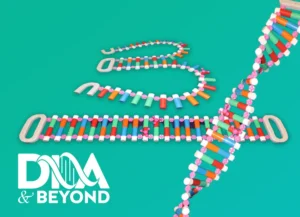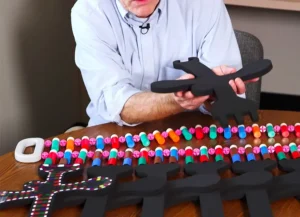1. Did you know…
that at Quora.com/what-is-the-shortest-rna/ we read about three such short kinds of RNA? Here’s the overview: “RNA primers, microRNA, and small interfering RNA (or short interfering RNA) are some of the shortest RNA molecules. RNA primers are probably the smallest. RNA primers (~18–25 base pairs long) are necessary for DNA replication, serving as starting points for DNA synthesis in both leading and lagging strands (the beginning and concluding codons of a gene sequence). They are synthesized by the enzyme primase, and are eventually removed and replaced with DNA. Primers are necessary because DNA polymerase can only add nucleotides to an existing strand of DNA or RNA.
“On the other hand, microRNA (miRNA) and short interfering RNA (siRNA) are both regulatory RNA found in most eukaryotes [life forms that possess a nucleus for the storage of DNA]. While both are ~20–25 base pairs long, siRNA is double-stranded and miRNA is single- stranded and folds on itself to form short hairpin loop motifs. Both can act in the RNA interference (RNAi) pathway, with either one being a component of the RNA-induced silencing complex (RISC), which interferes with expression or translation of their target mRNA. siRNA mediate mRNA cleavage, while miRNA, depending on its degree of complementarity with its target mRNA, can mediate cleavage, translational repression, or deadenylation (which makes the mRNA transcript less stable).”
2. Did you know…
In the nucleus, proteins such as RNA polymerases bind to DNA, and then separate the strands by breaking the hydrogen bonds between the DNA nucleotides, and assembles free nucleotides into their polymeric nucleic acid along the DNA strand in the 5’ to 3’ direction making complementary, or antisense, pre-messenger RNA strand that goes through further processing to make a mature mRNA strand.
3. Did you know…
This YouTube video– https://www.youtube.com/watch?v=aVgwr0QpYNE — is a masterful 97-second crash course on the splicing of mRNAs after the removal of introns! This superb overview is mandatory watching, as it traces the process of removing pieces of RNA called “introns” from the “first draft” of the mRNA, to produce the ready-to-use version of mRNA. In this video, you will see the process in real time, focusing on just one intron that is being removed, with the help of a stunningly complex molecular machine, the spliceosome.
After the intron is clipped out of the RNA, the two pieces on each side, called “exons,” are spliced together. The end of the video treats us to a breathtaking view of the entire mRNA, with the three introns being removed!
Robert Shapiro, the late NYU professor of chemistry and author of “Origins: A Skeptic’s Guide to the Creation of Life on Earth” (Bantam Books, 1986, p. 76) crafted this delightfully whimsical overview of the process of splicing the mRNA, which takes place only in eukaryotes, that is, animals above the level of one-celled bacteria and algae.
“If, for example, we imagine that a bacterial gene reads something like this (in the language of DNA, of course): ‘Here are the plans for the construction of a protein to digest lactose,’ then an equivalent gene in a higher organism might read this way: ‘Here are the plans gibble gabble for the construction of hubba hubba a protein to digest lactose.’ The story is interrupted by ‘commercial breaks,’ irrelevant messages that biochemists call introns. Their purpose is unclear. …
“It is clear…that these interruptions never reach the ribosome. If they did, they would be treated as if they were an intended part of the message and a faulty protein would be produced. Rather, they are edited out in a splicing process at the RNA level.”


